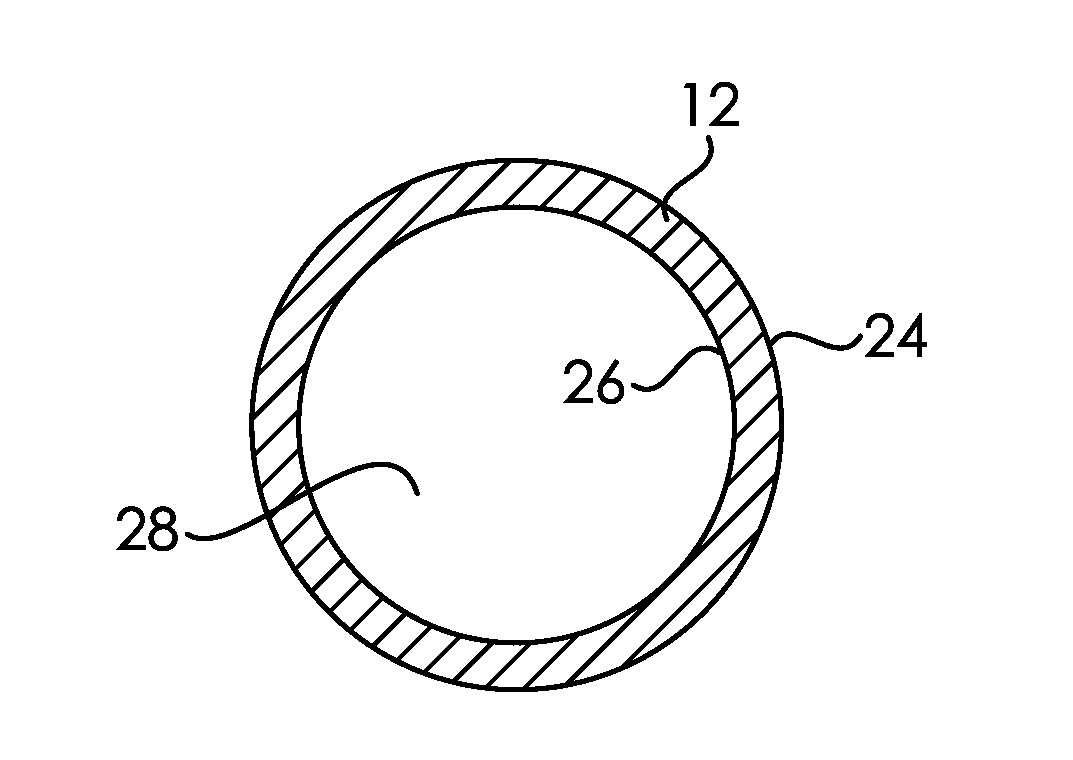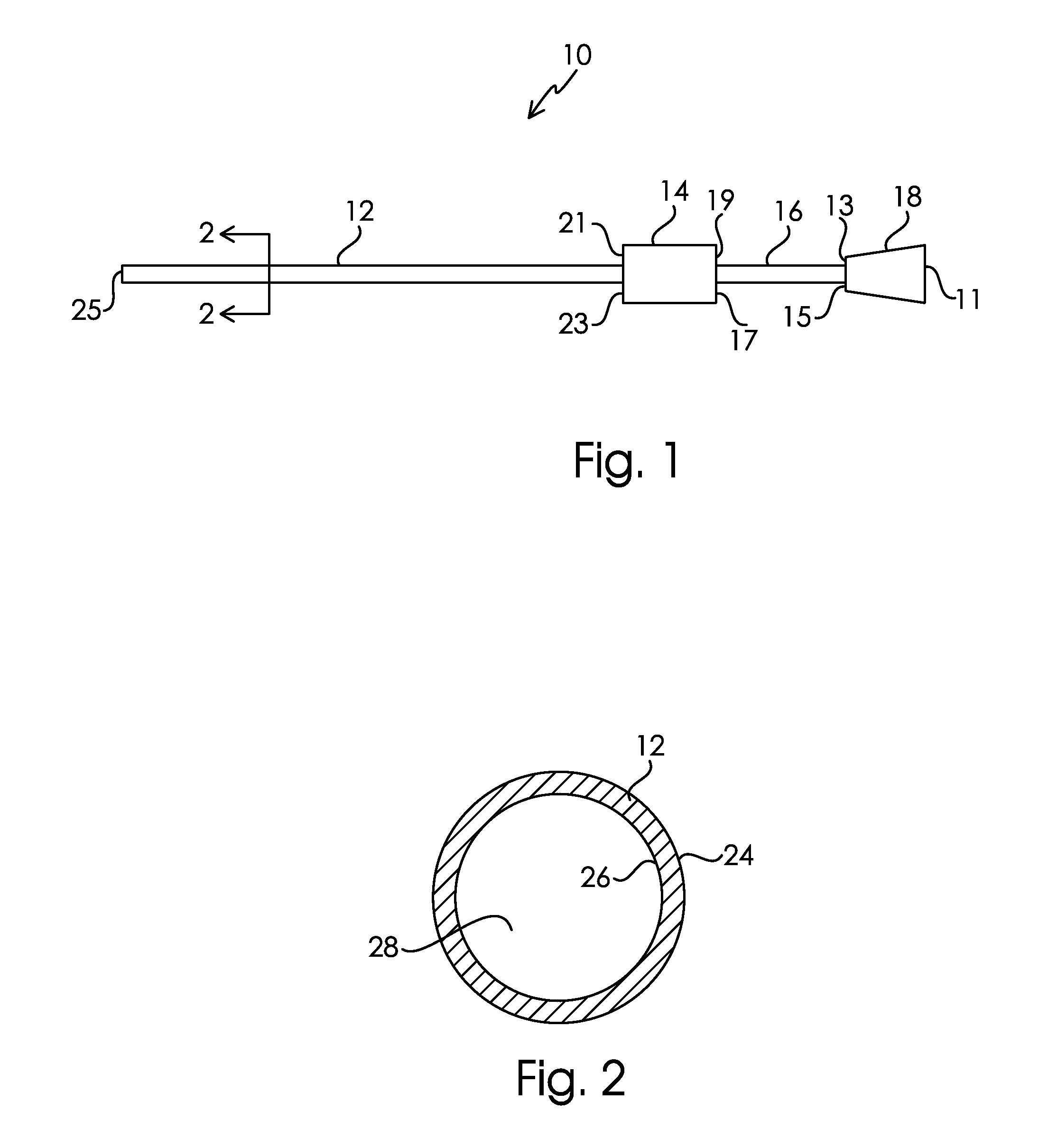Surface modification for catheters comprised of multiple materials
a technology of multiple materials and catheters, applied in the field of catheters, can solve the problems of increased patient care cost, non-uniform coating thickness, inaccessibility, etc., and achieve the effects of reducing microbial attachment, biofilm formation, platelet attachment or thrombosis
- Summary
- Abstract
- Description
- Claims
- Application Information
AI Technical Summary
Benefits of technology
Problems solved by technology
Method used
Image
Examples
example 1
Surface Modification of PICC Catheter
[0354]PICC catheters comprising polyurethane (Tecothane®)-30%BaSO4-5FR DD lumen catheter bodies, polyurethane (Pellethane®) junction hubs, and polyurethane (Pellethane®) extension lines were surface modified. The lumens of the PICC body had an aspect ratio of approximately 500:1. First, the entire catheter was imbibed with O,O-t-Butyl-O-(2-ethylhexyl) mono-peroxycarbonate (“TBEC”). Next the catheters were modified with SBMA monomer and Fe(II) reaction solution. The imbibing and reaction solutions were flowed through the lumen of the catheter using a pumping system. The modified samples were washed and dried. In this example, SBMA was the only monomer introduced during the polymerization reaction.
example 2
Surface Modification of PICC Catheter— Body Lumen
[0355]Three PICC catheters modified in Example 1 were cut into 11 sections spaced along the axial length of the body. Data from the corresponding segments from each of the three were averaged. The hydrophilic surface modification had an Average Dry Thickness across the axial length of the PICC body of >200 nm on the luminal wall, exterior, and septum. The hydrophilic surface modification had a Standard Deviation of Thickness across the axial length of the PICC body of <25% of the Average Dry Thickness of the corresponding surface for the luminal wall, exterior, and septum.
example 3
Surface Modification of PICC Catheter— Midpoint Region of Body Lumen
[0356]Three PICC catheters modified in Example 1 were cut into 11 sections spaced along the axial length of the body. Data from the corresponding segment from each of the three were averaged. The hydrophilic surface modification had a Dry Thickness at the Midpoint Region of the body luminal wall of >200 nm. The Dry Thickness at the Midpoint Region of the body lumen was >80% of the Average Dry Thickness across the axial length of the body lumen.
PUM
| Property | Measurement | Unit |
|---|---|---|
| Thickness | aaaaa | aaaaa |
| surface roughness | aaaaa | aaaaa |
| Thickness | aaaaa | aaaaa |
Abstract
Description
Claims
Application Information
 Login to View More
Login to View More - R&D
- Intellectual Property
- Life Sciences
- Materials
- Tech Scout
- Unparalleled Data Quality
- Higher Quality Content
- 60% Fewer Hallucinations
Browse by: Latest US Patents, China's latest patents, Technical Efficacy Thesaurus, Application Domain, Technology Topic, Popular Technical Reports.
© 2025 PatSnap. All rights reserved.Legal|Privacy policy|Modern Slavery Act Transparency Statement|Sitemap|About US| Contact US: help@patsnap.com



